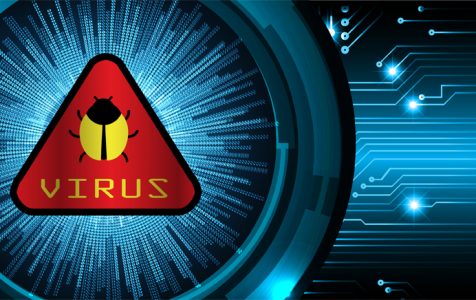A lot of types of malware can get injected into a computer system. These programs can either be viruses, worms, hybrids and exotic forms, ransomware, fileless malware, adware, spyware, malvertising, or a trojan horse. One of the examples of the latter is Gh0st RAT.
About the Gh0st RAT Virus
Gh0st RAT is a Windows-based remote access trojan that primarily targets government agencies, embassies, foreign ministries, and other government and military offices in Southern and Southeastern Asian countries, albeit its primary target is the exiled Tibetan government and the Dalai Lama.
A Little Bit of History
It was June 2013 when Gh0st RAT was first distributed via a spear-phishing campaign, which was believed to have come from the Taiwan Bureau of National Health Insurance. The emails distributed through the phishing campaign contained a malicious link, which when clicked, would redirect users to a phishing page. An official-looking RAR archive then got downloaded. This file was the one that installed and executed the Gh0st RAT.
What Does Gh0st RAT Virus Do?
The Gh0st RAT virus can do keystroke logging, disable the infected machine’s remote pointer and keyboard input, download remote binary files on the infected remote host, provide active processes, activate a system’s microphone and webcam without the user’s knowledge and permission, shut down and reboot the host system, and take full control of the remote screen of the infected device.
Keystroke logging means the criminals that are distributing the malicious program can record keys pressed on the keyboard. This means they can steal credentials such as logins and passwords of the accounts of the user. With the same information, they can also gain access to banking or email accounts, and even gain access to credit card data. They then use these pieces of information to make fraudulent transactions and purchases. They can also extort money from other people and send scam/spam campaigns.
Gh0st RAT can also be used to install cryptocurrency mines. These programs can cause high CPU and/or GPU usage. This then leads to higher electricity consumption while also causing diminished computer performance. Infected systems will often have unexpected and unwanted shutdowns, hardware overheating, and other problems.
In 2019, an updated variant of Gh0st RAT had been found by researchers. This updated version is capable of downloading additional malware, cleaning event logs, file management, shell command execution, and offline keylogging.
Here’s what else this trojan can do:
- take screenshots of the desktop
- record video or sounds
- allow third parties to monitor the device
- run commands
- open backdoors to other attackers
How to Remove Gh0st RAT Virus?
Removing a malware manually can be hard. It is a tedious process that requires tech knowledge. But if you want to give it a try, here are Gh0st RAT removal instructions you need to follow in order to get rid of the dreaded virus:
- Open Task Manager and identify the malicious program you want to remove. (Note: To open Task Manager, simultaneously press Ctrl + Shift + Esc.)
- Download a program called Autoruns. This will show you auto-start applications, registry, and file system locations.
- Reboot your system into Safe Mode.
Windows 7 / Windows XP
Start > Shut Down > Restart > OK. As your computer starts, repeatedly press the F8 key until the Windows Advanced Option menu pops up. Select Safe Mode with Networking from the list.
Windows 8
Start screen > type Advanced > select Settings > under General PC Settings, click on Advanced startup options > click on the Restart now button. After your PC has restarted into the Advanced Startup options menu, click Troubleshoot > Advanced options > Startup settings > click Restart button. When the Startup Settings screen pops up, press F5 to restart into Safe Mode with Networking.
Windows 10/11
Windows logo > click on the Power icon > click Restart in the opened menu while holding the Shift button on your keyboard. A “choose an option” window will pop up, click on Troubleshoot > select Advanced options. In the advanced options menu, select Startup Settings > click on Restart. As the next window pops up, press F5.
- Extract the downloaded archive. Run the Autoruns.exe file.
- In the Autoruns application window, click Options > click on Hide Empty Locations and Hide Windows Entries options > tap Refresh.
- Look through the list provided by Autoruns and find the malware that you want to remove. In this case, the remote access trojan Gh0st RAT. Remove.
- Search for the malware on your computer. Be sure to delete it.
- Restart your computer.
Summary
Like other types of computer viruses, the Gh0st RAT virus can do serious harm to a victim’s computer. So, don’t let yourself become one, too. Remember, crucial and sensitive information it at stake here. Take the necessary steps to get rid of it as soon as possible.
Know more PC repair tips and tricks on Software Tested!
